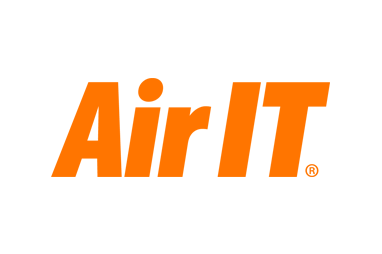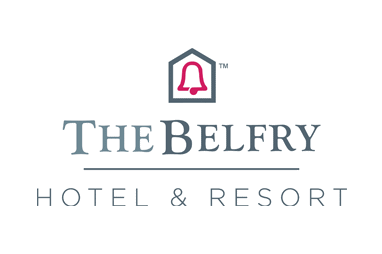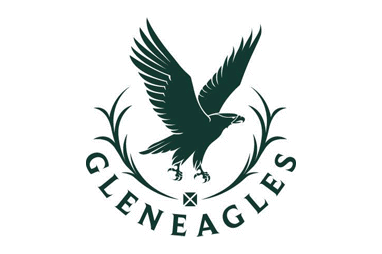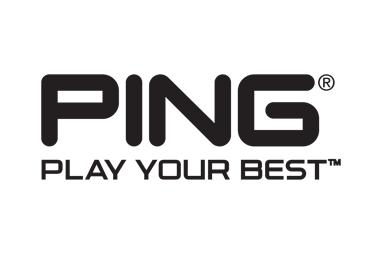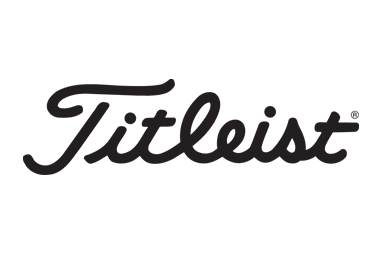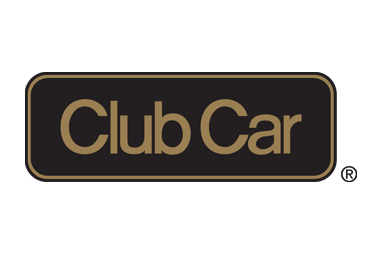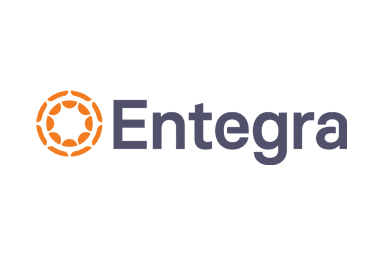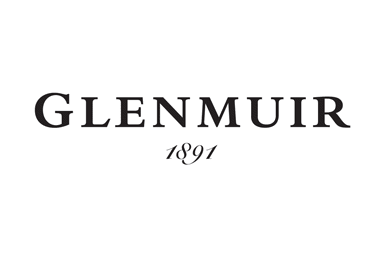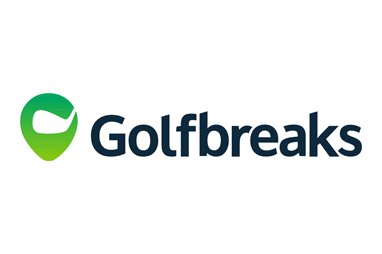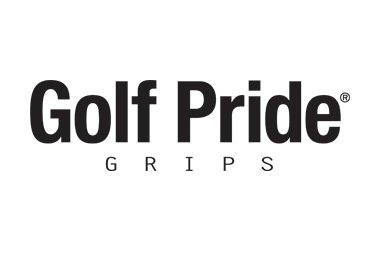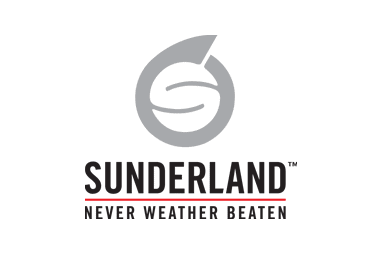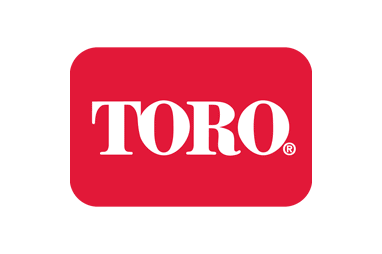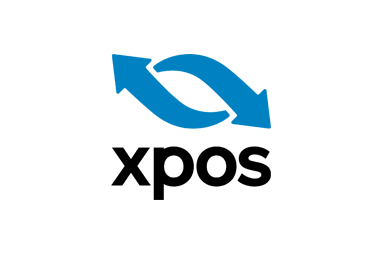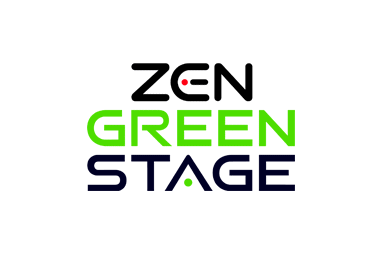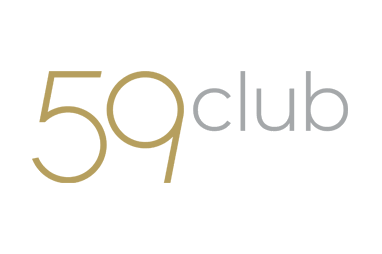COVID-19 Limited companies scenarios for accessing government support
COVID-19 Limited companies scenarios for accessing government support
The PGA have created various scenarios to provide guidance on government support for self employed Members.
Background
The Professional Golfers’ Association is aware that self-employed PGA Professionals use a variety of business models in order to deliver their services. Almost every PGA Professional is currently affected by business interruption due to the COVID-19 emergency, while government advice and support is evolving almost daily.
Against this background, the Association is keen to provide some clarity to members on what government support is currently available under a number of scenarios, depending on how their individual businesses are constituted, and how this support might be accessed. This information is for guidance only. It is not intended to be prescriptive and legal and accounting/tax advice should be sought where appropriate.
Types of business model
The key business situations under consideration are:
- Sole trader
- Partnership
- Limited companies
- Multiple income sources e.g. employed for some services, self- employed for others
LIMITED COMPANIES
Definition
A limited company is a form of business which is legally separate from its owners and directors. It must be incorporated through Companies House, which confers on it the status of being a separate legal “person”, with a unique company registration number. It is governed by the requirements of The Companies Act and its own Articles of Association, and must make returns of information to Companies House.
The most prevalent type of limited company applicable to the business activities of PGA Professionals is the private company limited by shares. In general, this is a popular structure for small businesses. The owners of the company are protected by limited liability so the amount they have to lose if the company fails is strictly limited. This differs from a sole trader or general partnership, both of which are unincorporated businesses where there is no legal distinction between the owner and the business, and consequently leaves the owner potentially having to sell or surrender their personal assets to meet the debts of the business.
Private limited companies cannot offer shares to the general public.
This type of business model is popular with many PGA Professionals since it combines the potential to share in profits with a clear restriction on personal financial liability.
As a separate legal entity, a limited company is subject to taxation in its own right, and needs to register for Corporation Tax with HMRC and, depending on its operations, may also be subject to (and require registration for) other taxes, such as VAT, PAYE and Capital Gains Tax. Accounts must be filed with both HMRC and Companies House each year, in most cases within 9 months of the financial year end of the business.
Examples of primary activities
Scenario 1 - Club Professional with retail activities, a number of employees and who is himself primarily salaried within the business
Scenario 2 - Club Professional with retail activities, a number of employees and who remunerates himself by way of dividend
Scenario 3 - Club Professional whose retail activity operates through a limited company but who runs a separate coaching business
Scenarios 1-3 could be equally applicable to Club Professionals and golf range operators.
The scenarios that follow are intended to be samples of situations which might arise, and should be treated as indicative to allow the PGA member to best assess his or her own likely situation in relation to the COVID-19 financial challenges.
He’s been operating his business as a private limited company for many years and is beginning to think ahead to his retirement. He provides a retail service and attracts the normal retainer and commission mix, but feels less inclined nowadays to do much coaching or custom fitting, instead employing a qualified assistant professional and a trainee professional who assist him in providing these services.
His business has been profitable over the years, and his revenue streams remain strong, enabling him to afford his staff.
He decided, in the last few years, to take a modest salary from the business to give him a secure regular income, and sometimes tops this up, as he feels necessary, by declaring a small dividend should cash flow and profitability allow.
Michael’s business is VAT registered, and under the terms of his contract with the golf club, he does not need to pay business rates on the professional’s shop premises.
He traded throughout 2019/20, until such times as the golf courses throughout the United Kingdom were closed. Michael’s business is now effectively mothballed until the current crisis plays out.
He has taken the first steps towards designating his staff as “furloughed workers” under the terms of the Coronavirus Job Retention Scheme, in order to minimise the financial impact on his business and ready himself to restart trading in the next few months. He has no work for his employees to do, but is keen that they both stay with him as he fully intends to get his business back on track during 2020/21.
Before reaching this decision, he checked that the company had sufficient cash flow to furlough the staff for the next 3 months, since it is not clear when payments under the scheme will be made by HMRC. Had cash flow been insufficient, he would have made an application through the Coronavirus Business Interruption Loan Scheme before considering, as a last resort, other options such as lay off, unpaid leave or redundancy. Had he needed to resort to these latter options, he was aware of the need to comply with employment law and the individual employment contracts of his staff.
Michael has written to both members of staff to notify them of the change in their status and has agreed it with them. He knows that the staff must be furloughed for a minimum of 3 weeks and will keep an eye on developments over time, for example if restrictions are lifted on golf participation or on opening the pro shop, so that he can get them back to work as soon as possible after the 3 week minimum furlough period.
Update: On April 17 the government announced the extension of the Coronavirus Job Retention Scheme through to June 30, 2020 at least.
He will need to advise HMRC, once their online portal is set up, of the employees who have been furloughed, along with details of their salaries, and should receive reimbursement of up to 80% of these employees’ wage costs, up to a cap of £2,500 per month, once the reimbursement system is set up. Neither of Michael’s employees earn above that cap through their salaries.
Update: On April 20 the portal enabling employers to make a claim for funding through the Coronavirus Job Retention Scheme went live at 8 am. Click here for guidance on how to make a claim.
With no income being generated for the foreseeable future, Michael is not in the position to pay the 20% of their earnings over and above the 80% likely to be available through the Coronavirus Job Retention Scheme, but the staff understand the position and accept it, both welcoming the fact that their jobs will in all probability be reinstated once the crisis is over, and that in the meantime the associated National Insurance Contributions and minimum automatic enrolment employer pension contributions will continue to be met during the furlough period.
Since he is reducing the pay, Michael will advise the bookkeeper who prepares the company’s monthly payroll information of names of the furloughed staff to allow the 80% to be computed.
His qualified assistant’s pay can be variable throughout the year and since he has been with Michael for more than 12 months, the claim would be based on the higher of:
- The same month’s earnings from the previous year; or
- Average monthly earnings for the 2019/20 tax year.
In the qualified assistant’s case, the higher figure is the average monthly earnings for the 2019/20 tax year, given the seasonal nature of the golf industry.
His trainee was employed within the last 12 months, so his computation will be based on his average monthly earnings since he started.
Michael was keen for his qualified assistant to help him plan and prepare for restarting activities when circumstances allow, and the assistant was keen to help. However, while furloughed, employees are prohibited from undertaking any work for their employer, so these plans have had to be shelved.
Michael will, however, keep in touch with his employees regularly throughout their furlough, particularly where there are developments which might expedite their return to work.
Having decided to furlough his staff, Michael turned his attention onto his own position. As a salaried employee of the company earning £35,000 per annum, he is eligible to be furloughed under the Coronavirus Job Retention Scheme and he has decided that he will take advantage of the furlough option for the next 3 weeks at least, since there is nothing happening either on or off the golf course. Had he been earning over £50,000, he would not have been eligible for the scheme.
Michael will include his own information on the HMRC portal, when available, and in an act of solidarity with his own workforce, he does not intend to pay himself the additional 20% not covered by the scheme, so the 80% will be applied to his actual salary before tax as at 28 February 2020. As with his staff, Michael will proactively monitor developments to allow him to get off furlough and back to work at the earliest opportunity. He realises that he is also prohibited from undertaking any work for the company during the furlough period if it generates commercial revenue or provides services to or by the company. Any activity he undertakes as a salaried director is restricted to him fulfilling his statutory duties to the company.
The turnover of Michael’s company exceeds £85,000 per year, so he has been registered for VAT for some time. His VAT quarter ended on 31 March 2020, and his VAT return was therefore due for submission to HMRC, and his payment due to have cleared, by 7 May 2020 (one month and 7 days after the end of the VAT quarter). However VAT payments due between 20 March until 30 June have been deferred and now fall to be paid by no later than 5 April 2021, so this should have a positive impact on Michael’s cash flow in the interim. However, Michael still needs to submit his VAT return by 7 May 2020 to avoid penalties.
If Michael pays his VAT by direct debit, the payment will be taken from his account when his VAT return is lodged with HMRC, so he should cancel his direct debit and reinstate it in time to meet the new due date for payment.
Update May 4 2020 – Michael considered applying for a Bounce Back Loan when the scheme was announced on 27 April but decided that since he has sufficient cash flow at present he would hold off making any application until he saw the impact on the business once golf re-opens. The scheme itself is open until 4 November 2020 so he has time to make an application if and when the time is right for his business.
In summary, Michael, through his limited company and because he has sufficient cash flow to tide him over for a few months, is in a position to take advantage of the Coronavirus Job Retention Scheme in relation to his furloughed staff. This is also available to him, as an employee of the company, because his salary is less than £50,000. In addition, his business can take advantage of the VAT deferral arrangements and he has the option of applying for a Bounce Back Loan up until November 4 2020.
Scenario 2 - Club Professional with retail activities, a number of employees, remunerates via dividend
Paul is a Club Professional who has been operating his business as a private limited company for a number of years.
He provides a retail service, specialises in club fitting, undertakes a limited amount of coaching due to lack of facilities at the club and attracts the normal retainer and commission mix. He employs a qualified assistant professional, and in early March took on a trainee professional to gear up for the start of the season.
He accounts for all of his business activities through the company, his business has been profitable over the years, and his revenue streams remain strong, enabling him to afford his staff. His returns to Companies House and his Corporation Tax returns are up to date, his business is registered for VAT and PAYE, and under the terms of his contract with the golf club, he does not need to pay business rates on the professional’s shop premises.
Paul does not take a salary from the business, instead relying on declaring and paying dividends out of profits after Corporation Tax (at the current main rate of 19%). Since Corporation Tax has been paid on profits, the dividends he receives are not subject to National Insurance Contributions (“NICs”) but Paul pays voluntary NICs to secure his state pension in years to come. His dividends are, however, subject to income tax and are included on his self-assessment tax return each year.
Paul considers the dividends option to be the most suitable and attractive for his circumstances since there is flexibility over the time in which you need to declare dividend payments. For instance, they can be declared and paid at the end of the financial year, and at points throughout the year, as long as his company is turning a profit. Unlike if he was paid a salary of a fixed amount every month, he can choose to have a dividend declared and payment made at a time that best suits the business’s situation and his own income needs.
He and his accountant reviewed his tax situation and agreed that any tax advantage that might accrue from paying himself a small salary in addition to his dividends was marginal, and did not really warrant his inclusion on the company payroll. They concluded that the use of dividends was the most tax efficient way for Paul to take income, while minimising paperwork, since dividends attract lower rates of income tax than salary, albeit a Corporation Tax liability arises on the company profits.
Paul’s business traded throughout 2019/20, until such time as the golf courses throughout the United Kingdom were closed. The business is now effectively mothballed until the current crisis plays out.
He has taken the first steps towards designating his staff as “furloughed workers” under the terms of the Coronavirus Job Retention Scheme, in order to minimise the financial impact on his business and ready himself to restart trading in the next few months. He has no work for his employees to do, but is keen that they both stay with him as he fully intends to get his business back on track during 2020/21.
Update: On April 17 the government announced the extension of the Coronavirus Job Retention Scheme through to June 30, 2020 at least.
However, it became apparent that, although his qualified assistant could be furloughed under the terms of the scheme, his trainee, who only took up position during March 2020, was not eligible because he had not been on the company payroll at 28 February 2020. Paul therefore had to address the issue of his employees in two different ways:
- He wrote to his qualified assistant to notify her of the change in her status and has agreed it with her. He knows that the staff must be furloughed for a minimum of 3 weeks and will keep an eye on developments over time, for example if restrictions are lifted on golf participation or on opening the pro shop, so that he can get her back to work as soon as possible after the 3 week minimum furlough period. With no income being generated for the foreseeable future, Paul does not intend to pay the 20% of his assistant’s earnings over and above the 80% likely to be available through the Coronavirus Job Retention Scheme, but she understands and accepts the position, welcoming the fact that her job will in all probability be reinstated once the crisis is over, and that in the meantime the associated National Insurance Contributions and minimum automatic enrolment employer pension contributions will continue to be met during the furlough period.
- In relation to his new trainee, and in the absence of the furlough option, he had to consider the terms of the assistant’s employment contract, which had been signed 2 days after his employment commenced in early March and carries a notice period of one month. Depending on the terms of the employment contract, and in line with Employment Law, Paul needs to decide whether the trainee could, or should, be laid off or have his contract terminated on notice. He remains keen on the trainee starting back with him after the shut-down, but doesn’t feel he can afford to keep him on the payroll when he has nothing for him to do.
Update: On April 15 the Government announced a change in the cut-off date for eligibility for furloughing, moving from 28 February to 19 March, as long as the employment had been notified to HMRC on a Real Time Information (“RTI”) submission on or before March 19.
Paul’s RTI submissions are up to date and he is now in a position to furlough the trainee.
Had that not been the case, his trainee, if on unpaid leave, may need to consider making an application for Universal Credit, an option which would also be available to him if he was given his notice. If the trainee’s contract was terminated, he might also be able to apply for Jobseekers Allowance.
Paul will keep in touch with his employees regularly throughout, particularly where there are developments which might expedite their return to work or re-employment.
Update: On April 20 the portal enabling employers to make a claim for funding through the Coronavirus Job Retention Scheme went live at 8 am. Click here for guidance on how to make a claim.
Having reached his decisions on his staff, Paul had to consider his own financial situation. He realised that, because of his decision to derive his income by way of dividends alone through his private limited company, and in the absence of any other trading or employment income sources, he does not qualify under either the Self Employed Income Support Scheme not the Coronavirus Business Continuity Scheme. He is neither classed as employed by the company, nor self-employed through other trading activities. Paul will therefore need to live off his savings until his business can be reactivated. He had, however, managed his finances astutely, and believes he has sufficient personal savings to see him through the next few months. Should that not be the case, he may want to consider an application for Universal Credit, which would stand or fall on his personal circumstances.
The turnover of Paul’s company exceeds £85,000 per year, so he has been registered for VAT for some time. His VAT quarter ended on 31 March 2020, and his VAT return was therefore due for submission to HMRC, and his payment due to have cleared, by 7 May 2020 (one month and 7 days after the end of the VAT quarter). However VAT payments due between 20 March until 30 June have been deferred and now fall to be paid by no later than 5 April 2021, so this should have a positive impact on Paul’s cash flow in the interim. Paul still needs to submit the VAT return by 7 May 2020 to avoid penalties.
If Paul pays his VAT by direct debit, the payment will be taken from the company’s bank account when the VAT return is lodged with HMRC, so he should cancel his direct debit and reinstate it in time to meet the new due date for payment.
Update May 4 2020 – Paul became aware of the Government’s new Bounce Back Loan Scheme which is aimed at helping small and medium sized businesses, particularly with cash flow, during the current pandemic.
Paul believes his business meets all the criteria for a Bounce Back Loan and intends to complete the on-line application form on the British Business Bank website when the system opens on 4 May 2020.
The loans are underwritten by the Government and are worth between £2,000 and £50,000, or 25% of turnover.
The funding could be particularly useful in the short term since the loan attracts 0% interest in the first 12 months, and there are no penalty clauses for early repayment, so it may suit Paul as a short term kick-start to get his business active again.
In summary, Paul, through his limited company, is in a position to furlough his assistant, thereby taking advantage of the Coronavirus Job Retention Scheme, and his business is also able to take advantage of the VAT deferral arrangements. He, personally, cannot take advantage of either the Coronavirus Job Retention Scheme or the Self Employment Income Support Scheme because of his dependence on dividend payments through his private limited company as his source of income. Finally, since his trainee cannot be furloughed or laid off, Paul needs to make a decision on whether or not to terminate the trainee’s contract on notice, and re-employ him when things get back to normal.
Update: With the change in cut-off date to March 19, and because Paul had notified HMRC on an RTI submission, by March 19, that his trainee was now on the payroll, he is now in a position to furlough his trainee.
From May 4 2020, he may also be able to take advantage of the Bounce Back Loan Scheme, subject to his application being approved.
He provides a retail service, specialises in club fitting and attracts the normal retainer and commission mix. James employs a qualified assistant professional and a trainee.
His returns to Companies House and to HMRC (in relation to Corporation Tax) are up to date, as are his own self-assessment tax returns, while his company is registered for VAT and PAYE, and these returns are also up to date.
James is a highly regarded coach who is always in demand, and he runs his coaching activities as a sole trader, providing all of the coaching sessions himself. His accountant has confirmed to him that his coaching services meet the criteria for VAT exemption under the terms of VAT Notice 701/45 (Sports Supplies that are VAT Exempt) and VAT Notice 701/30 (Education and Vocational Training). It is essential that he continues to meet, and demonstrate that he meets, these criteria in order to maintain his VAT exempt status for coaching.
James is acutely aware of the need for his coaching business to operate and be accounted for completely separately from his private limited company in order for him to demonstrate the VAT exempt status. To this end he maintains a separate set of financial records, runs a separate bank account, and has a designated credit card machine for use solely for his coaching activities. His coaching business therefore demonstrably operates at arms’ length from his private limited company. James reports his income as a sole trader on his annual self-assessment tax returns.
Under the terms of his contract with the golf club, James does not need to pay business rates on the professional’s shop premises.
He does not take a salary from the limited company, instead declares and pays dividends out of profits after Corporation Tax (at the current main rate of 19%). His dividends are subject to income tax and are included on his self-assessment tax return each year.
He does, however, take drawings from his coaching business, since he is the exclusive owner, entitled to keep all profits after tax has been paid.
James’s business traded throughout 2019/20, until such time as the golf courses throughout the United Kingdom were closed. The business is now effectively mothballed until the current crisis plays out.
James, like many other Club Professionals, has taken the first steps towards designating his staff as “furloughed workers” under the terms of the Coronavirus Job Retention Scheme, in order to minimise the financial impact on his business and ready himself to restart trading in the next few months.
Update: On April 17 the government announced the extension of the Coronavirus Job Retention Scheme through to June 30, 2020 at least.
Having reached his decisions on his staff, James had to consider his own financial situation.
He has two main sources of income to take into consideration – his trading profit from his coaching activities which he undertakes as a sole trader, and his dividends which he takes as a distribution from his private limited company operations.
On his 2018/19 self-assessment tax return, his trading profits from the coaching business totalled £20,000, while James received dividends from the limited company of £25,000. Since at least half of a claimant’s income needs to have come from self-employment as detailed on his 2018/19 tax return filed in January 2020, James is not entitled to grant support under the Self Employed Income Support Scheme (“SEISS”) since his trading income represents just over 44% of his total income.
Had his sole trader income and dividends been at different levels, he would potentially have been be entitled to a level of support under the SEISS.
For example, had his dividend income been £20,000 and the trading profit from his coaching activities been £25,000, his trading income would have represented just over 55% (i.e. more than 50%) of his total income and he would therefore likely be entitled to grant support under the SEISS of up to 80% of his monthly average trading profit or £2,500, whichever is lower. His average monthly income in this situation would have been £2,083 (80% of which is £1,666) so James’ grant would have been £1,666 for the three months to 31 May 2020.
However, since James’ trading income per his 2018/19 self-assessment tax return was less than 50% of his total income, he is not entitled to grant support under SEISS.
James was due to pay the next instalment of his 2019/20 self-assessment income tax on 31 July 2020. He does not now have to pay this until 31 January 2021, although he is free to make the payment in July 2020 if he so wishes.
James may want to liaise with his accountant with a view to completing his financial statements and filing his 2019/20 self-assessment tax return early in order to crystallise any refunds etc which might fall due to him.
The turnover on James’s company, primarily generated from his retail operation, exceeds £85,000 per year, so he has been registered for VAT for some time. His VAT quarter ended on 30 April 2020, and his VAT return was therefore due for submission to HMRC, and his payment due to have cleared, by 7 June 2020 (one month and 7 days after the end of the VAT quarter). However VAT payments due between 20 March until 30 June have been deferred and now fall to be paid by no later than 5 April 2021, so this should have a positive impact on James’ cash flow in the interim. However, James still needs to submit the company’s VAT return by 7 June 2020 to avoid penalties.
If James pays his VAT by direct debit, the payment will be taken from his account when his VAT return is lodged with HMRC, so he should cancel his direct debit and reinstate it in time to meet the new due date for payment.
Update May 4 2020 – James has considered applying for a Bounce Back Loan under a scheme announced by Government on 27 April and which is aimed at helping small and medium sized businesses, particularly with cash flow, during the current pandemic.
However, his trading income from the coaching activity is generally less than 50% of his total income, so given his dependence on dividends for more than 50% of his income, it is at this stage unclear whether James will meet the criteria, either through his coaching activity or through his Limited Company, to qualify for a loan under this new scheme.
In summary, because James’ trading income is less than 50% of his total income per his 2018/19 self-assessment tax return, he does not qualify for the SEISS grant. Has his trading profit from coaching been more than 50% of his total income, he may have been entitled to access that grant. He can, however, maximise cash flow advantages by deferring self-assessment income tax and VAT payments, and maintain his workforce by using the furlough arrangements.
Since his trading income is less than 50% of his total income, it is not clear whether James will be eligible for a Bounce Back Loan under the scheme announced by Government on April 27, and he should take advice via the British Business Bank, if he decides to make an application.
Scenario 3b - Club Professional whose retail activity operates through a limited company but who runs a separate coaching business
Gordon, a Club Professional and coach, operates his business as a private limited company.
He provides a retail service, golf lessons, is an experienced club fitter and is in receipt of a retainer and commissions from the Club. Gordon employs a trainee who is in his second year of his studies.
His returns to Companies House and HMRC (in relation to Corporation Tax, his own self-assessment tax return and the company’s VAT and PAYE) are up to date and under the terms of his contract with the Golf Club, Gordon does not need to pay business rates on the professional’s shop premises.
All of his activities are accounted for through the company, so are considered to be standard rated for VAT purposes.
On the advice of his accountant, Gordon takes a small salary from the limited company to take advantage of the 0% tax rate up to the level of the personal allowance each year. For tax year 2019/20, the personal allowance was £12,500. He supplements this salary by declaring and paying dividends out of profits after Corporation Tax (at the current main rate of 19%). His dividends are subject to income tax and are included on his self-assessment tax return each year.
Gordon’s business traded throughout 2019/20, until such time as the golf courses throughout the United Kingdom were closed. The business is now effectively mothballed until the current crisis plays out.
Like many other Club Professionals, Gordon has taken steps to designate his trainee as a “furloughed worker” under the terms of the Coronavirus Job Retention Scheme, in order to minimise the financial impact on his business and ready himself to restart trading in the next few months. He then had to consider his own financial situation.
Update: On April 17 the government announced the extension of the Coronavirus Job Retention Scheme through to June 30, 2020 at least.
Gordon has two main sources of income to take into consideration – his salary and his dividends from his private limited company.
As a salaried employee of the company earning £12,500 per annum, which falls well under the salary eligibility of £50,000, he is able to be furloughed under the Coronavirus Job Retention Scheme and he has decided that he has no option but to furlough himself for the next 3 weeks at least, since there is nothing happening either on or off the golf course.
Update: On April 20 the portal enabling employers to make a claim for funding through the Coronavirus Job Retention Scheme went live at 8 am. Click here for guidance on how to make a claim.
Support under the Coronavirus Job Retention Scheme will be computed by applying the 80% to his actual monthly salary before tax as at 28 February 2020, £1,042, which will provide him with a taxable income of £833 per month. Gordon realises that, because of his decision to derive most of his income by way of dividends through his private limited company and remunerate himself with the minimum salary to take advantage of the 0% tax band, this is the maximum income he is entitled to. Because his salary is low, his income level, even with the furlough support arrangements, will be seriously compromised and he will likely need to use some of his savings to supplement his income until his business can be reactivated. Should that not be the case, he may want to consider an application for Universal Credit, which would stand or fall on his personal circumstances.
Gordon will proactively monitor developments during the furlough period to allow him to get back to work at the earliest opportunity, with a view as much as anything to increasing his income levels in early course. He realises that he is prohibited from undertaking any work for the company during the furlough period if it generates commercial revenue or provides services to or by the company, so any activity he undertakes as a salaried director is restricted to him fulfilling his statutory duties to the company (for example undertaking company secretarial work).
Gordon reports his dividend income through his self-assessment tax return and was due to pay the next instalment of his 2019/20 self-assessment income tax on 31 July 2020, but will not now have to pay this until 31 January 2021, although he is free to make the payment in July 2020 if he so wishes.
The turnover of Gordon’s company, primarily generated from his retail operation, exceeds £85,000 per year, so he is VAT registered. His VAT quarter ended on 30 April 2020, and his VAT return was therefore due for submission to HMRC, and his payment due to have cleared, by 7 June 2020 (one month and 7 days after the end of the VAT quarter). However VAT payments due between 20 March until 30 June have been deferred and now fall to be paid by no later than 5 April 2021, so this should help with Gordon’s cash flow in the interim. However, he still needs to submit the company’s VAT return by 7 June 2020 to avoid penalties.
If Gordon pays his VAT by direct debit, the payment will be taken from his account when his VAT return is lodged with HMRC, so he should cancel his direct debit and reinstate it in time to meet the new due date for payment.
Update May 4 2020 – The Government’s’ Bounce Back Loan Scheme announced on 27 April is available to sole traders and private limited companies and is aimed at helping small and medium sized businesses, particularly with cash flow, during the current pandemic. As a private limited company based in the UK, which was not in financial distress on 31 December 2019 and which has been negatively affected by the pandemic, Gordon’s company seems to meet the criteria for a loan and he intends to complete the on-line application form on the British Business Bank website when the system opens on 4 May 2020.
The loans are underwritten by the Government and are worth between £2,000 and up Update 4 May 2020 – The Government’s’ Bounce Back Loan Scheme announced on 27 April is available to sole traders and private limited companies and is aimed at helping small and medium sized businesses, particularly with cash flow, during the current pandemic. As a private limited company based in the UK, which was not in financial distress on 31 December 2019 and which has been negatively affected by the pandemic, Gordon’s company seems to meet the criteria for a loan and he intends to complete the on-line application form on the British Business Bank website when the system opens on 4 May 2020.
The loans are underwritten by the Government and are worth between £2,000 and up to 25% of turnover, up to a maximum of £50,000.
The funding could be particularly useful in the short term since the loan attracts 0% interest in the first 12 months, and there are no penalty clauses for early repayment, so it may suit Gordon as a short term kick-start to get his business active again.
In summary, Gordon, through his limited company, is in a position to furlough his assistant and himself, thereby taking advantage of the Coronavirus Job Retention Scheme. His own income, however, will be low, based on the minimum salary he pays himself to take advantage of the 0% tax rate, so it may be appropriate to apply for Universal Credit. His business is also able to take advantage of the VAT deferral arrangements, and the deferral of any income tax payment due in July 2020. From May 4 2020, he may also be able to take advantage of the Bounce Back Loan Scheme, subject to his application being approved.





